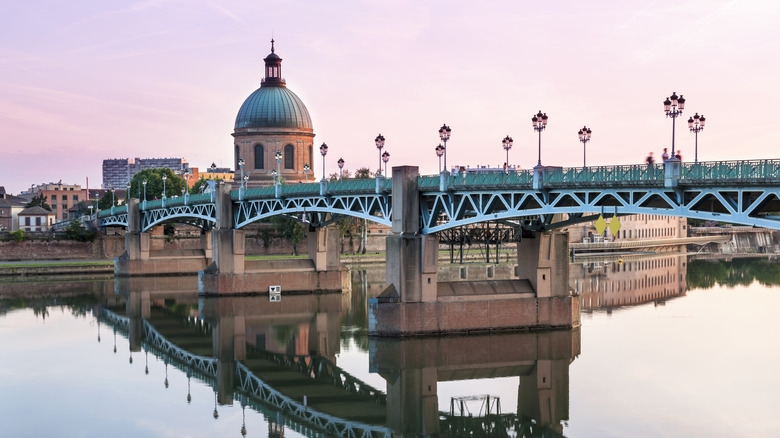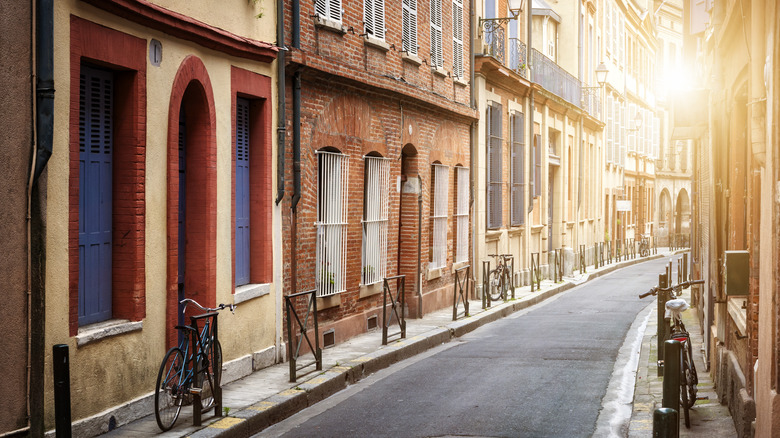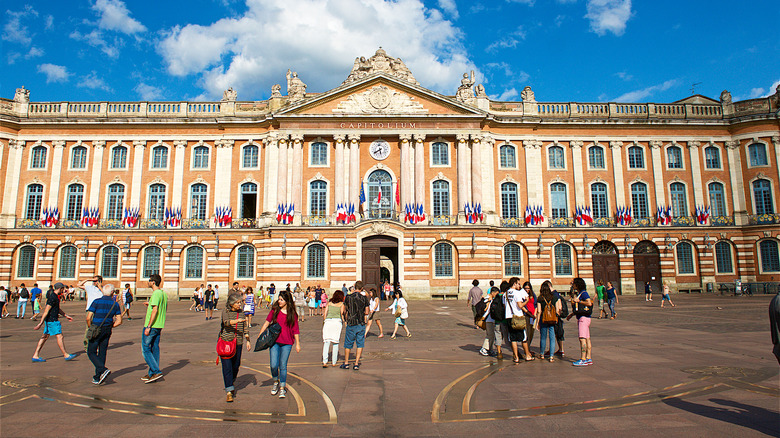Why The French City Of Toulouse Is Nicknamed 'The Pink City'
Situated in the south of the country, not too far from the Spanish border and the skiing destinations in Andorra, Toulouse is an inviting French city offering tourists an array of destinations to explore and discover. According to a Macrotrends 2022 report, Toulouse is home to just over 1 million people. The population establishes Toulouse as the fourth largest city in France just behind Paris, Lyon, and Marseille. This, according to the French National Statistical Office as reported by About-France (which estimates the population at about 1.27 million).
Toulouse is a city that has a way of pairing old-world European charm with modern innovation. The city hosts iconic art galleries like Les Abattoirs and is also known for its many restaurants and cafes. It's a place that provides opportunities for visitors to stroll along the scenic Garonne River while simultaneously functioning as the headquarters for the French Space Agency and Airbus alike.
Beyond its many landmarks, perhaps one of the most unique aspects of the city of Toulouse is its nickname. This destination is often referred to as 'The Pink City,' translated from the original French version, 'La Ville Rose.' Oftentimes, the question asked by travelers before they arrive is, why? A look around offers up an eye-catching answer.
A pink city with a rich and colorful history
Toulouse is a city that showcases an inspiring collection of pink brick architecture throughout. This specific pink brick has long been an iconic color palette in the area. So much so that the destination was eventually dubbed 'The Pink City.'
In the 1st century AD, modern-day Toulouse was known by the name Tolosa. It was firmly integrated under Roman rule as a part of the Narbonnaise Province according to Travel France Online. At this time, the Romans introduced brickmaking as a way to grow the area's architecture.
There wasn't much in the way of stone to be found in the terrain that made up Tolosa. Instead, the clay terraces under the Garonne River provided the people of the province with a vast supply of iron-rich brick-making material during the Roman occupation. According to Re-Thinking the Future, the older pink bricks that are found across Toulouse's architecture today are still the result of bricks fired using local, red alluvial mud. This type of clay was used to create bricks for buildings as well as decorative tiles to adorn city buildings.
A truly unique aspect of this type of clay is that the pink hue seemingly changes shade depending on how much sunlight it receives. France Today points out an old saying describing the brick hues of Toulouse. It's referred to as pink in the morning and red at midday, with mauve showing up at twilight.
Where to see the best examples of pink architecture
It's easy to fill your trip to Toulouse with stops at charming outdoor cafes and afternoons at fascinating museums. That said, taking time to admire some of the most vivid examples of pink brick architecture in the city is well worth adding to the to-do list. The good news is there are plenty of options to choose from.
Make your way to the Capitole de Toulouse when you're in the mood to admire a full facade of pink brick architecture. This iconic structure is finished with white marble columns and ornate stone details that are sure to impress. The building hosts City Hall as well as the Capitole Theater.
Another testament to why the city's nickname is a perfect match can be found at the Basilica St. Sernin. According to Toulouse-Visit Tourism, the basilica has earned a place as a UNESCO Heritage Site. It is also considered one of the largest Romanesque buildings in the Occident.
Whether you spend time checking out the Jacobins Convent or strolling the grounds at The University of Toulouse, you'll find 'The Pink City' proudly showcases its namesake across its architecture. This striking color palette is easy to admire and deserves some time to explore. In any case, visitors can count on the world looking a little rosier in Toulouse.


